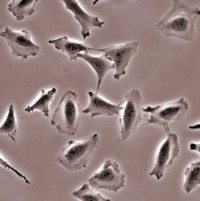‘Tunnels’ Between Cells: A New Target for Mesothelioma Treatment?
Doctors with Memorial Sloan Kettering Cancer Center in New York and the University of Minnesota in Minneapolis have just released a new report on cellular structures called tunneling nanotubes and their potential role in mesothelioma growth and proliferation. Tunneling nanotubes (TnT), which are also sometimes referred to as “membrane nanotubes” or “intercellular bridges” are actin-based extensions or tubes that function as channels for transporting materials and information between cells. Because tunneling nanotubes are one of the important ways cells communicate with each other, the researchers theorized that they may also play a role in mesothelioma and devised a series of experiments to try to determine what that role is. Among other findings, the researchers discovered that tissue taken from mesothelioma…









